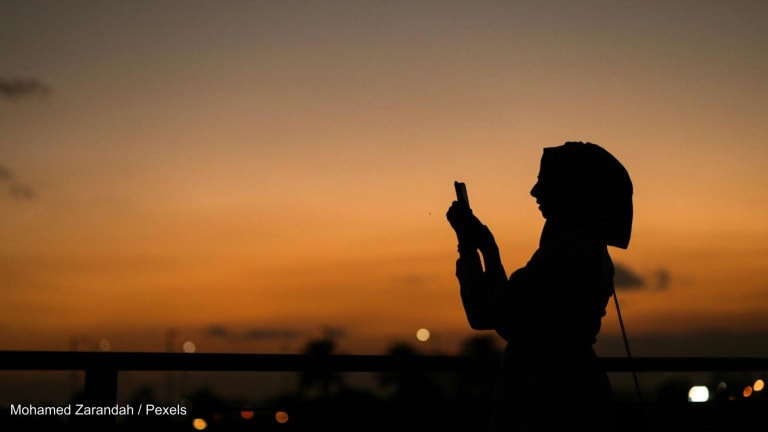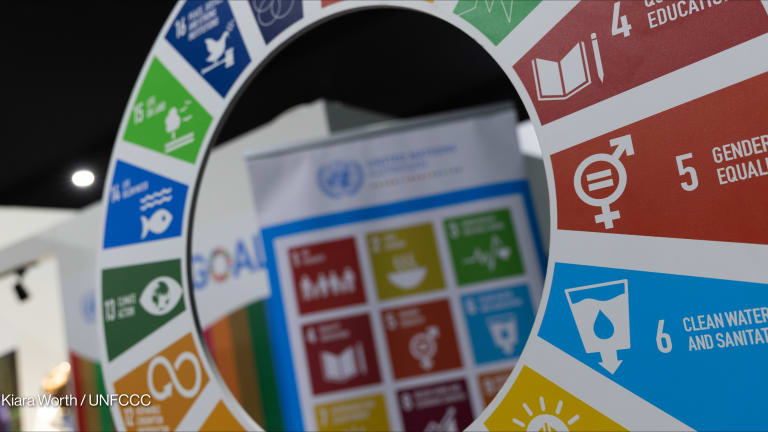
Data was already dubbed “the new oil” and the world’s most valuable asset back in 2017. Social media networks and digital platforms such as Instagram, TikTok, and WeChat have only grown since — the former recently surpassing more than 2 billion monthly active users worldwide.
Digital technology is reshaping the way the world’s 1.8 billion adolescents and young people aged 10-24 live, their access to education and health services, as well as how they interact with one another. However, digital platforms and technologies are also having adverse effects on their human rights including online harassment and cyberbullying, intimidation, and hate speech — not to mention the digital divide that keeps almost half of the world’s population offline.
As raised in a 2019 keynote speech by Michelle Bachelet, the United Nations high commissioner for human rights, focusing on human rights in the digital age is key, especially as data collection is already happening on an industrial scale. “Neither can we afford to see cyberspace and artificial intelligence as an ungoverned or ungovernable space — a human rights black hole. The same rights exist online and offline,” she said.
Devex spoke to Stefan Germann, CEO at Fondation Botnar, about how to balance the risks and rewards of the digital space and what’s needed to ensure youth can shape both the platforms they use and their regulations.
This conversation has been edited for length and clarity.
Digital platforms are double-edged swords that both promote freedom of speech and threaten human rights through hate speech, privacy violations, etc. How do we ensure that risks do not outweigh the benefits?
The rise of social media and digital platforms has created unprecedented opportunities to connect, to participate, and to get involved. It has stimulated tremendous digital growth and has truly become a global connecting force. However, there has been an almost free rein and a bit of a wild, wild west environment in terms of regulating these digital platforms. Now, we are starting to realize that we have collectively been a little bit too blindsided. Today, we are in a situation where we feel the downsides very strongly. Human rights and human dignity are threatened by hate speech, cyberbullying, sexual abuse, and privacy infringements. Similarly, democratic decision making is undermined by misinformation and fake news.
Another issue is that a lot of these companies and digital platforms have a deeply addiction-based business model. They're using the most advanced technologies drawing on neuroscience, emotional analytics, and behavioral economics to keep us longer on their platforms. It's really addiction-based, and not just for young people — it's for all of us and this has to be recognized.
Today we know that there are harmful consequences, and we need to find the right balance to leverage the tremendous power of digital platform and social media — including AI and data science — in a way that is actually sustainable and beneficial for society and the well-being of individuals. But we cannot leave it upon individuals to protect themselves but need governments to regulate this space in order to protect human rights online.
“It's really when we deeply embed technology in a human-rights respecting way into the ecosystem of the lived experience of people that these technologies can be very transformative.”
— Stefan Germann, CEO, Fondation BotnarBetween the rise of the metaverse and young people spending increasingly more time online, what do you consider the biggest digital threat to human rights, especially for youth in low- and middle-income countries?
We see that virtual and augmented reality such as the metaverse can be tremendously useful technologies. We see it in education, in medicine, in terms of training. But we also need to be aware that they can potentially be harmful for human rights. These technologies are tremendously data-hungry and there is a real risk of online surveillance, which can lead to a further erosion of privacy. Similarly, we need to recognize that this massive collection of data is being used to create very targeted neuromarketing campaigns — a sort of immersive advertising that is so smart that we often don't even realize that we are being targeted.
Another big issue is the lack of participation of young people in the design of these technologies. At Fondation Botnar, we are strongly advocating for much more collaboration and user-driven approaches to developing these technologies, as well as the policies regulating them. We should not leave it to self-regulation of big tech, but really have a participatory approach. That's the beauty of digital [technologies] — there is no excuse anymore not to reach out and actually seek input from youth in a participatory way. Why not use these platforms to have a much more user-centric design, both on the actual platforms, as well the policies regulating them?
Finally, the other question that is not addressed sufficiently — especially when it comes to low- and middle-income countries — is the deepening digital divide. While digital technologies are part of everyday life in high-income countries, an estimated 3.7 billion people in the world are unconnected, the majority of them girls and women. They still lack access to digital technologies. This also massively undermines their human rights, as it excludes them from many opportunities: from education, from political participation, from access to information.
In what ways are digital technologies also helping advance the human rights of young people? Can you give any examples?
There are a number of situations where we can see that technology really is driving positive change. We have launched a program for young people around AI-enabled solutions, and one great example is Safetipin in India. The program monitors safety within a city based on self-reported data on self-perceived safety. Safetipin can then create heat maps to indicate unsafe areas, for example, where there might be a dark alley because the lights are not working, and then use the data and heat maps to engage with policymakers, city officials, and the police to improve infrastructure and make it a more livable, safe city. It was started by a group of young women in India and is now being applied in other cities around the world such as Bogota in Colombia.
It's really when we deeply embed technology in a human-rights respecting way into the ecosystem of the lived experience of people that these technologies can be very transformative. And that's what we see as our role in the foundation: really to convene and bring young people, policymakers, and technologists together for a much more human-centered design approach. One where the user is really at the heart of it.
What role can groups such as civil society organizations and philanthropies play in supporting better governance of the digital space and help safeguard human rights online?
As civil society actors, we really have the ability to transform and use our history and experience with citizen participation — it’s in our DNA. So how can that be leveraged to influence and shape both digital platforms, but also the policies regulating them? Philanthropies and other civil society organizations have an important role to play when it comes to creating platforms for the meaningful participation of young people.
A Globaldev Guide to New Social Media
Explore how globaldev organizations are using TikTok, Clubhouse, and WhatsApp for outreach, communications, and fundraising, in our new special report.
At Fondation Botnar, we have been supporting the Young Experts: Tech 4 Health program, which is a very active group of young people from 12 different countries. It seeks to give them a voice at the table of policymakers both at the regional and global level. When creating these places for engagement, we foster a generation of engaged, connected, and curious citizens.
It's equipping young people with the skills needed to hold us collectively accountable, including — and notably — government and big tech. This generation of young people, who are born into the digital age, understand what is beneficial to them, and they understand what is harmful to them. We just need to give them the platform to actually influence and be heard.
Visit the Generation Why series for more coverage on how we can ensure the digital space advances the rights of all young people and leaves no one behind. You can join the conversation using the hashtags #DevexSeries on #DigitalRights.









